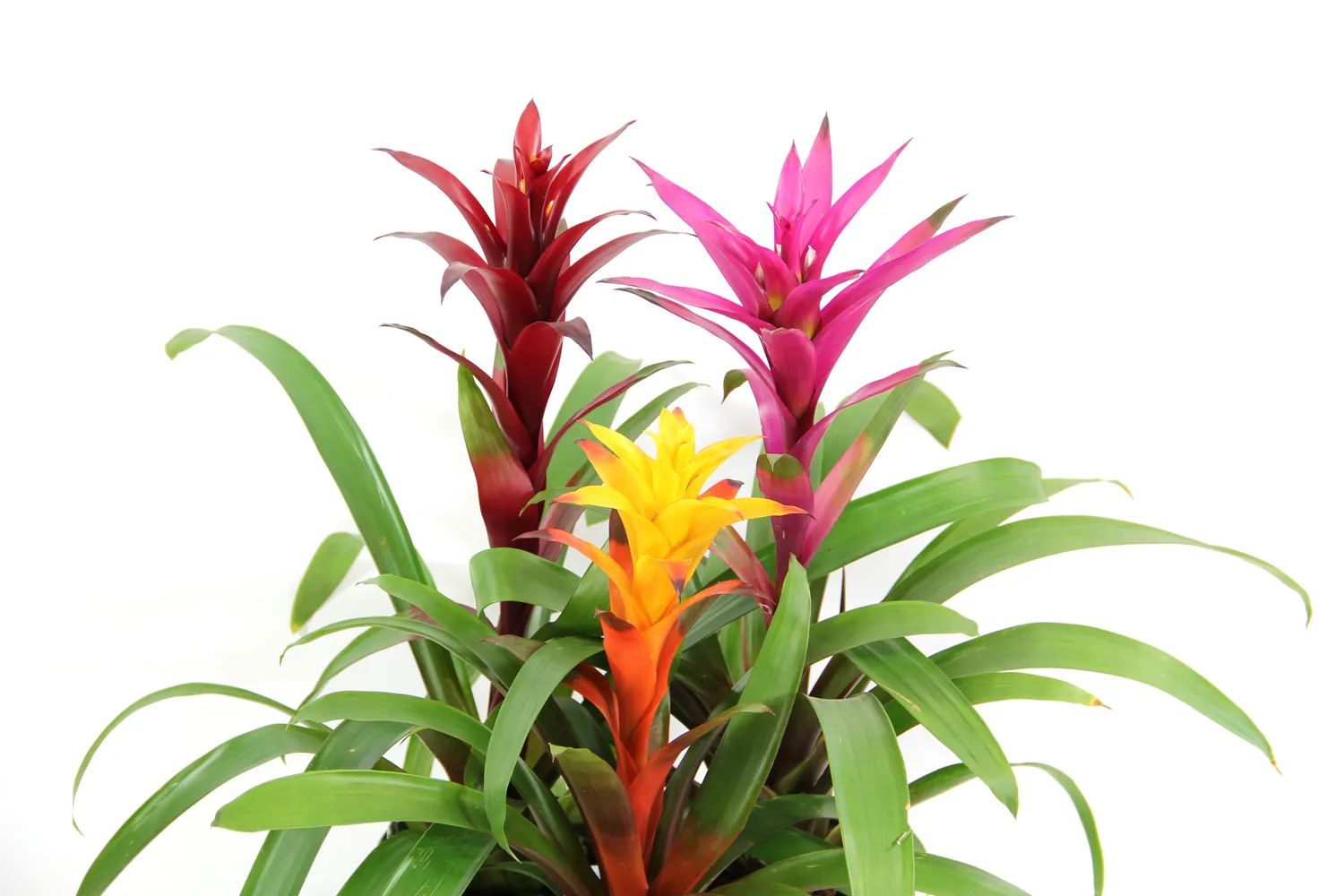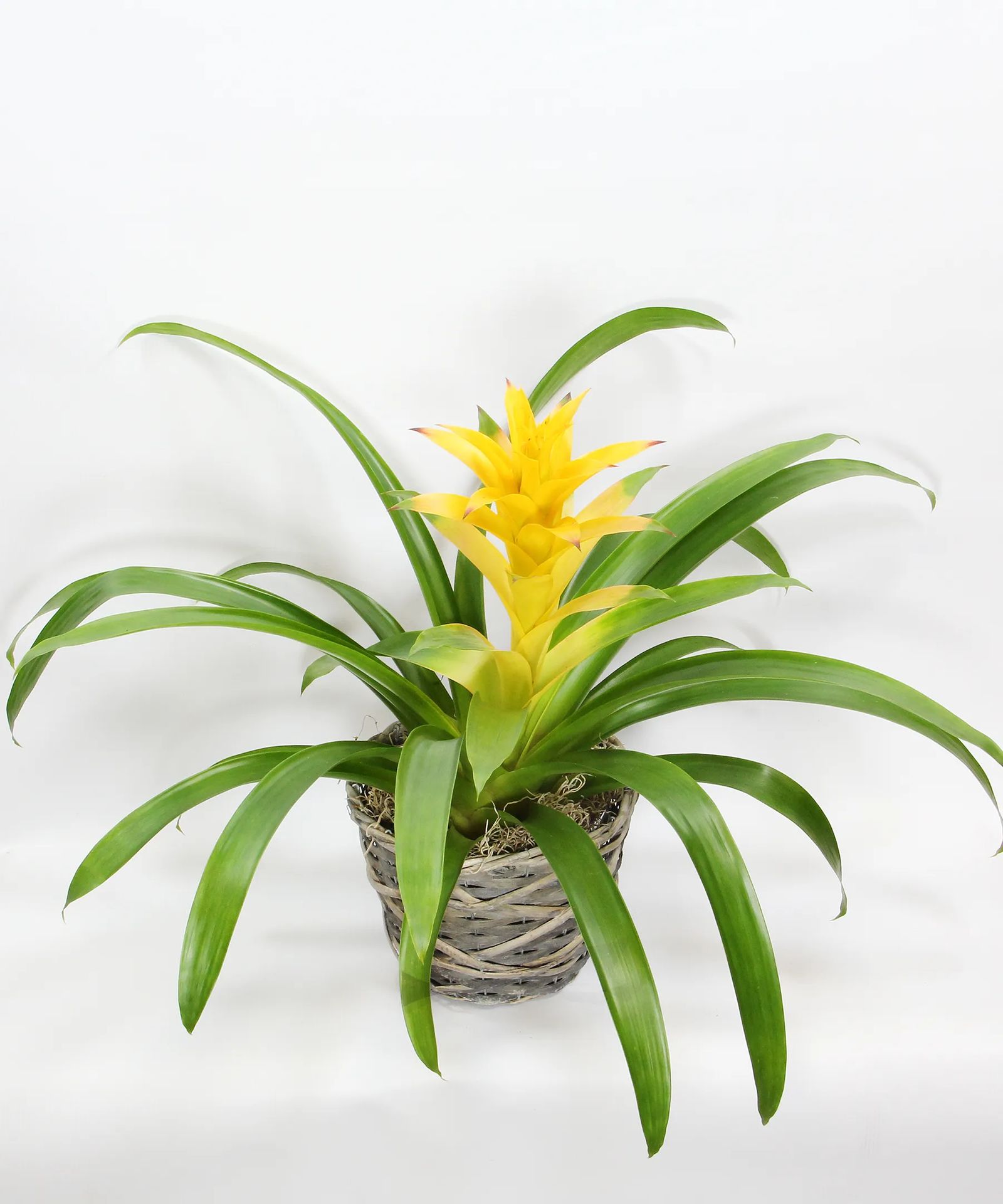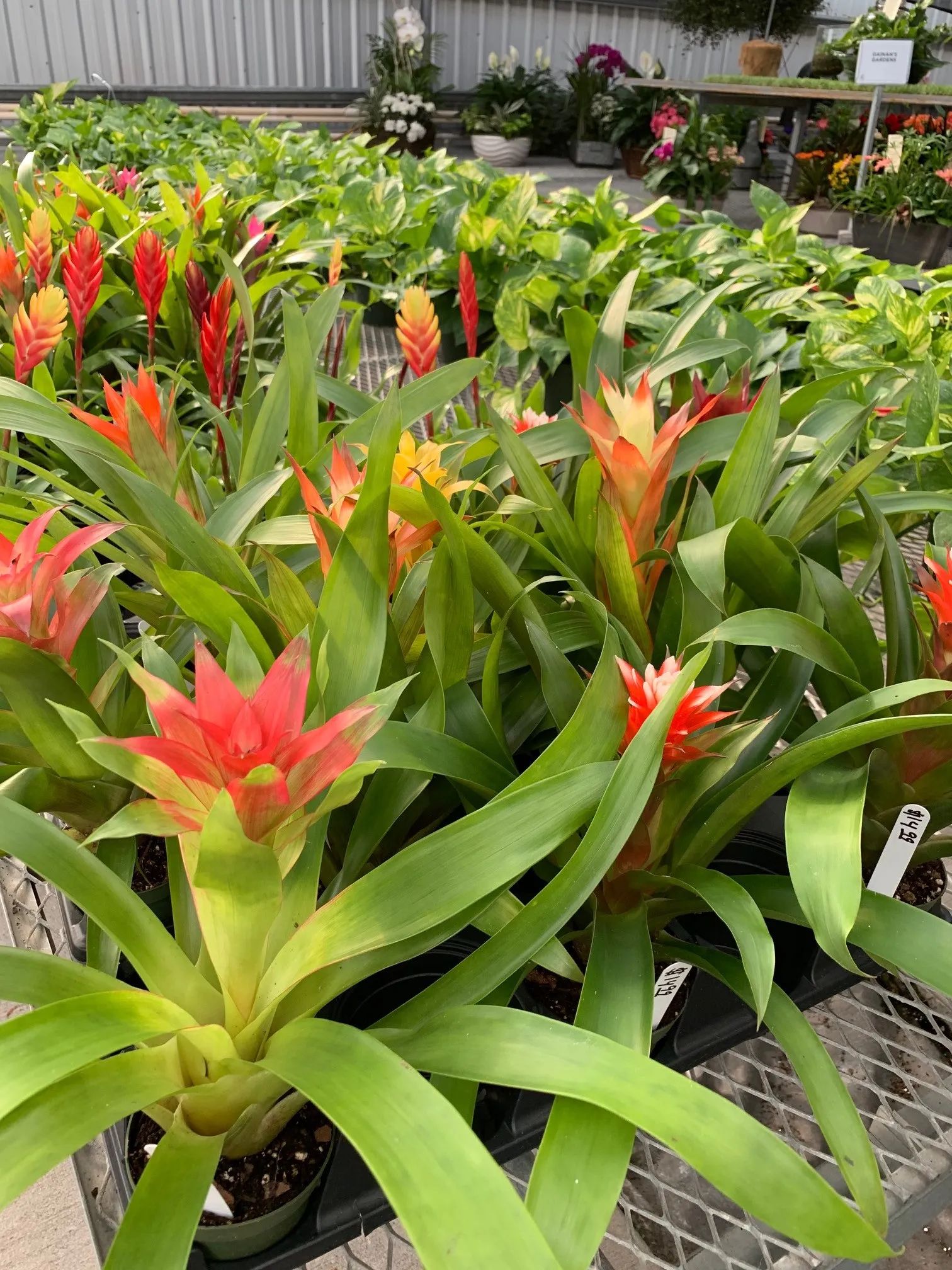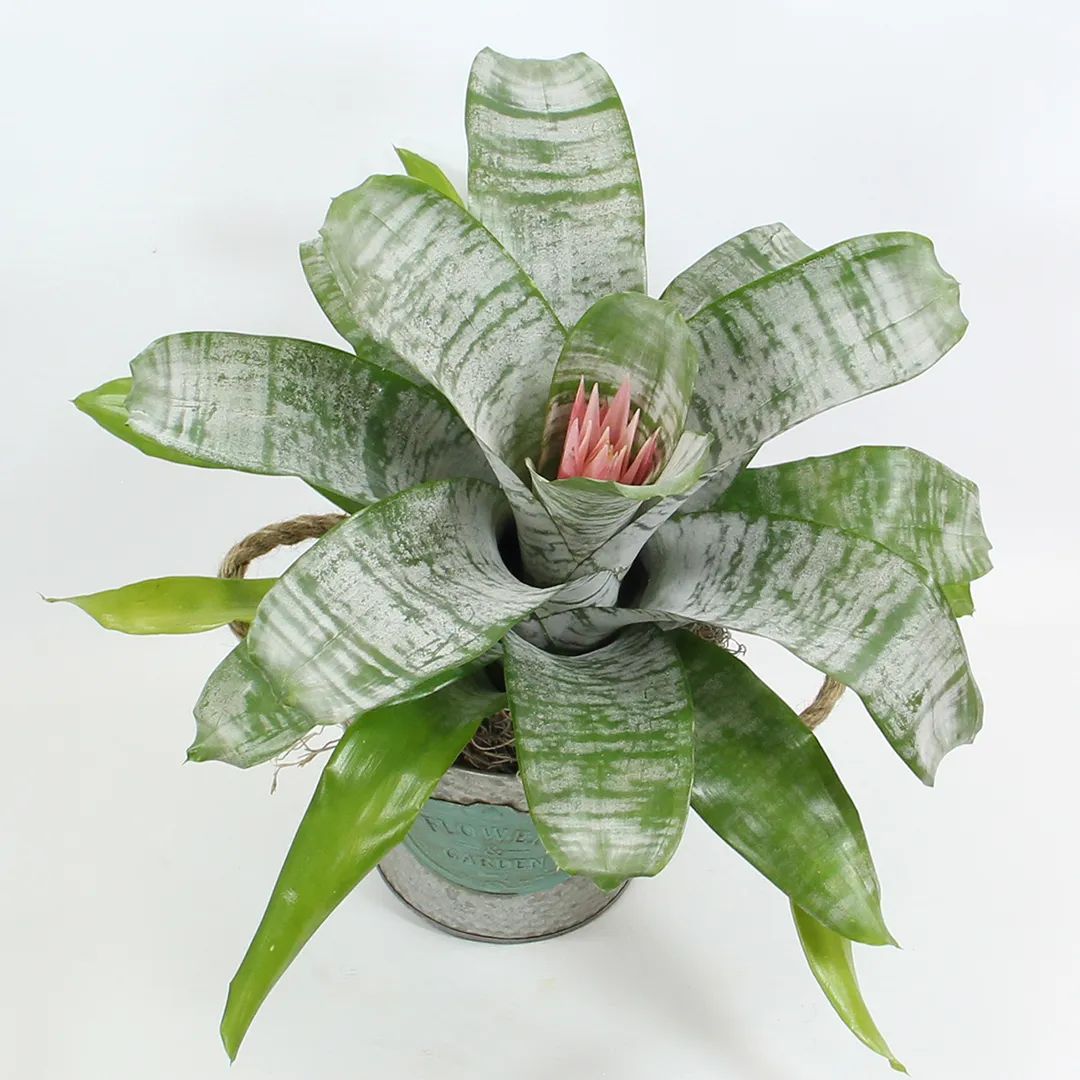
bring home a touch of the tropics
Turn to Bromeliads when picking your next house plant
Bromeliads are a diverse group of plants that can make beautiful and easy-to-care-for additions to any home. They are native to tropical regions and are known for their colorful and long-lasting flowers. There are two main types of bromeliads: epiphytic, which grow on trees, and non-epiphytic, which grow in soil or on rocks.
Epiphytic bromeliads are tree growers, sending roots over bark. The plant grows by absorbing water and food from the air. These plants survive on high humidity. Some epiphytic bromeliads have soft and pliable leaves, while others have harder, more leathery leaves. This comes from the degree of light they receive. Non-epiphytic bromeliads are grown in soil or rock in an open, warm, sunny spot. Because they are out in the open, they are armed with spines and hooked teeth to discourage predators.

Light requirements for bromeliads vary depending on the type of plant and its leaf texture. Non-epiphytic bromeliads typically need bright light, while epiphytic bromeliads prefer bright, diffused light with a few hours of direct sun. Think of the dappled sunlight coming through the canopy of a rainforest. It is important to provide the right amount of light for your bromeliad, as too little light can cause the plant to stop growing and go into a resting phase.
Bromeliads prefer warm room temperatures and high humidity. To increase humidity around your bromeliad, you can place the pot on a tray of moist pebbles. Watering bromeliads can be a bit different from other plants, as it is important to keep the center cup of the plant filled with water at all times and to empty it out once a month to prevent the water from becoming stale. The soil in the pot should be watered moderately allowing all excess water to drain. Water when the top half inch of soil is dry to the touch.

When it comes to potting and repotting bromeliads, it is important to use a porous potting mixture and a pot that is small enough to accommodate the plant's relatively small root system. Clay pots with potting soil tend to dry out faster than plastic pots, so you may want to consider using a plastic pot with a few pieces of clay pot in the bottom for extra drainage.

Bromeliads can be propagated by removing "pups," or new plants, from the base of the mother plant and repotting them in their own pots. The pups should have a good root system of their own and be planted in a soil mixture that drains well and holds the plant firmly in the pot. With proper care, your bromeliads can thrive and bring a touch of the tropics to your home.









